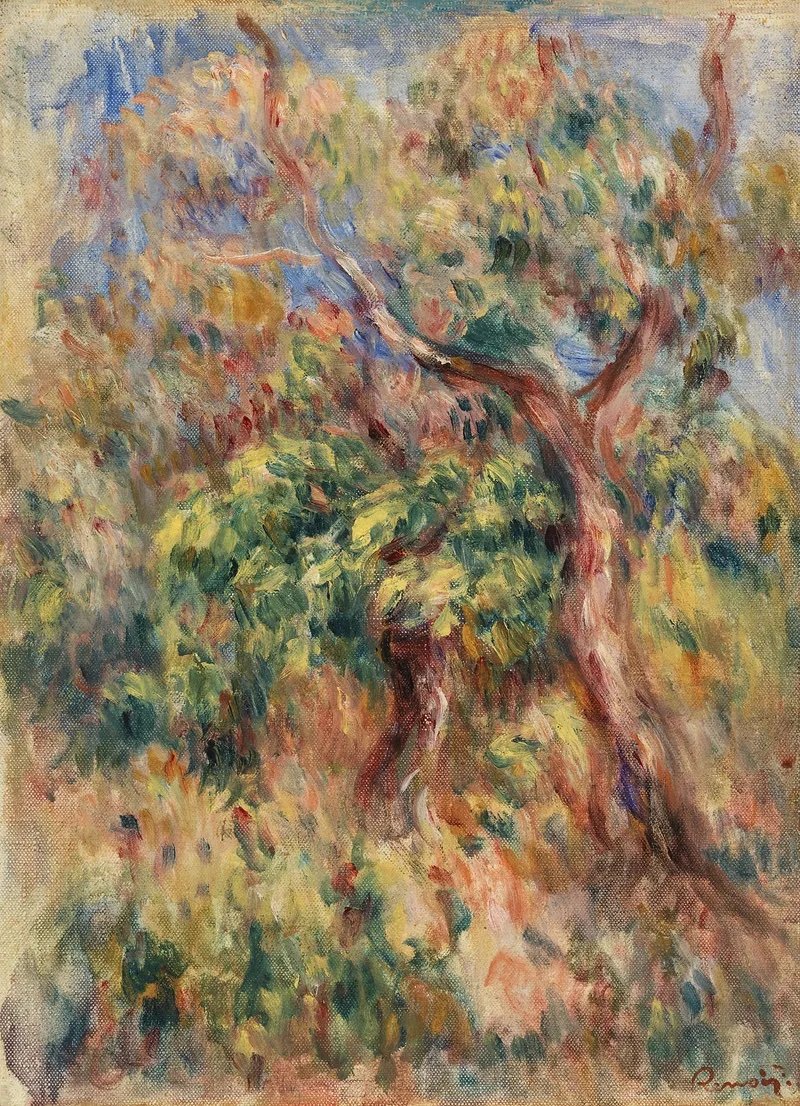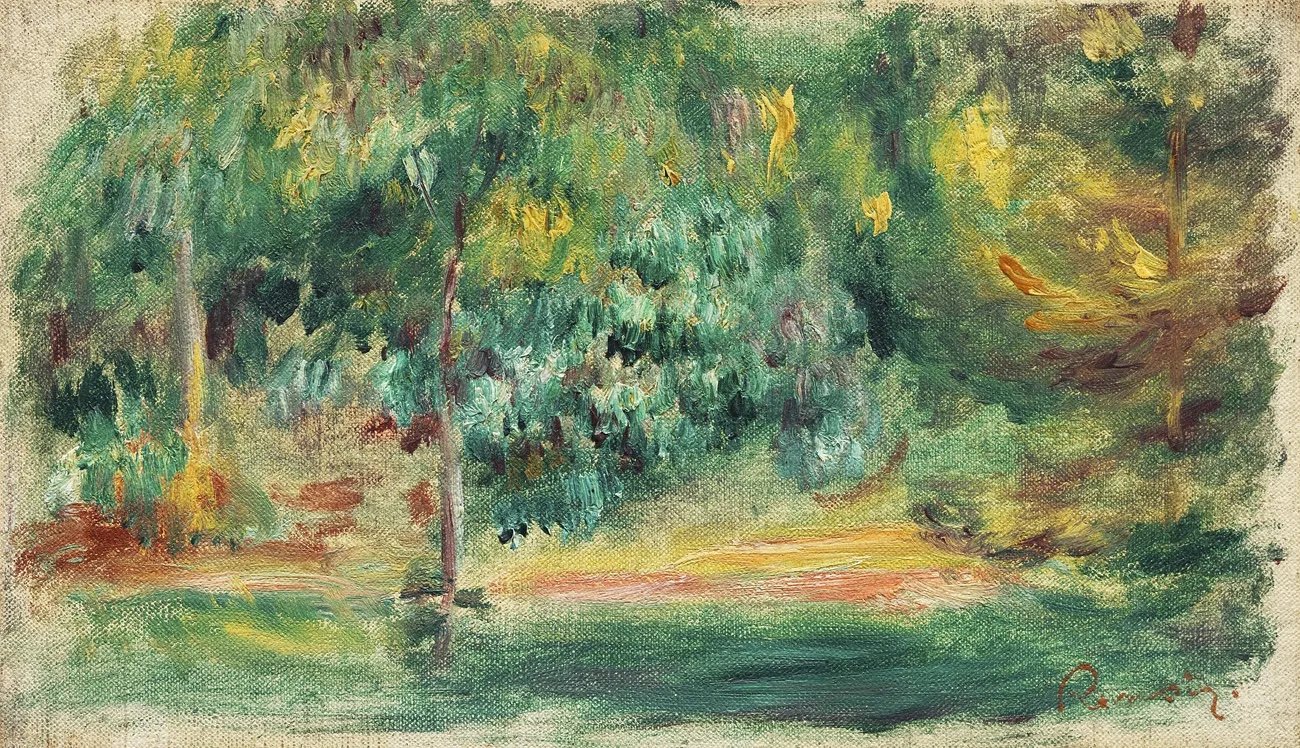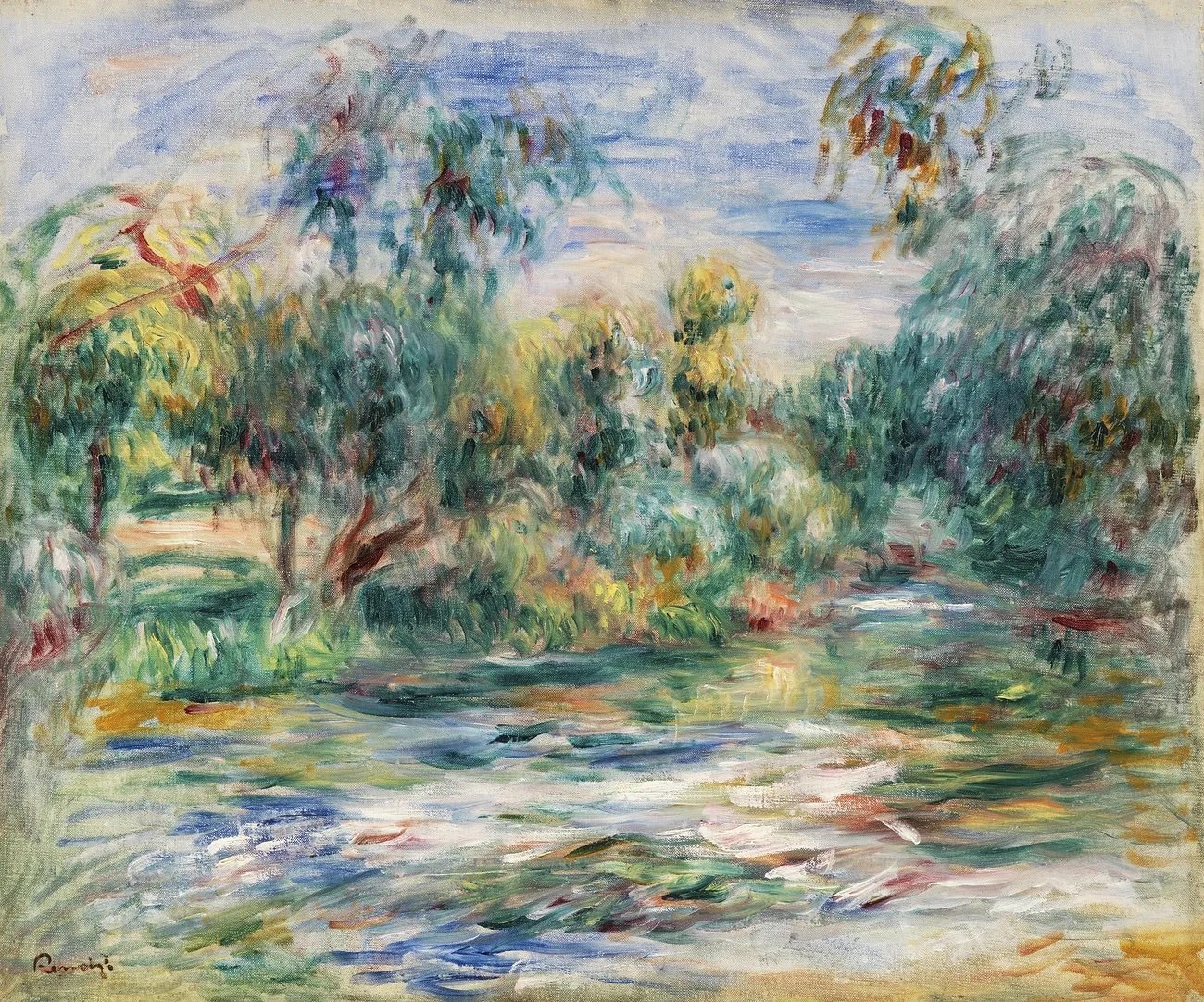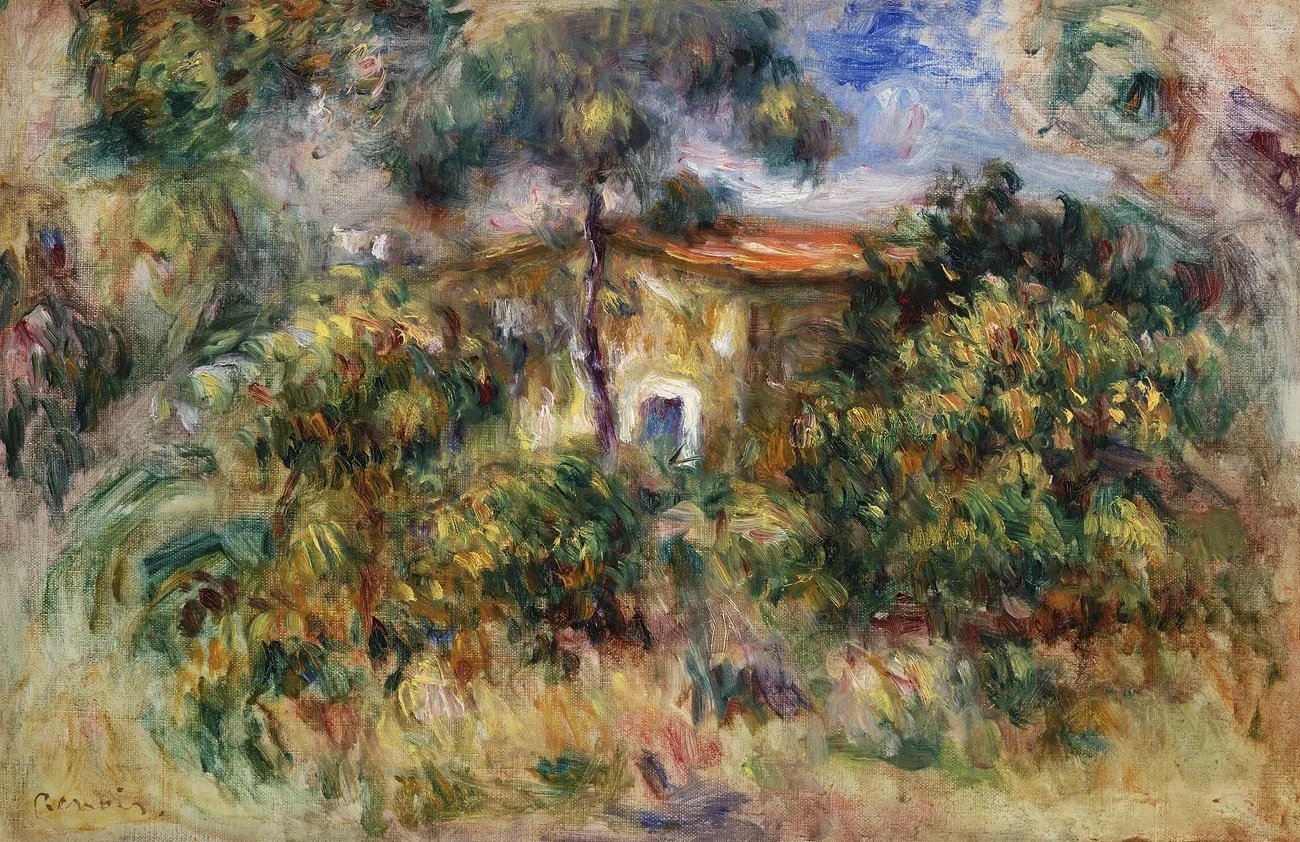The Tipping Point: If a tree grows, and no one is around, does it make a forest?
R.S.
A lot of nature writing begins with melancholic reminiscence about some landscape from some childhood past - like the wildflower meadow near my grandparents’ home in South Lebanon or the cold stream in the forest near my partner’s homeplace in the West of Ireland - that has been ravaged by industrialisation or climate change. The meadow has been turned into a supermarket and the stream has nearly dried up. Let’s try a different beginning.
Last year, I came across some academic philosophy papers on environmental ethics, specifically on the concept of ‘intrinsic value’ and its place in conservation biology. Intrinsic value is the value that something, like an organism or ecosystem, has in and of itself, in contrast with instrumental value, which is the value that it would have as a means to an end.[1] The answer to the question of whether nature has intrinsic value, independent of its economic or recreational or other use to humans, may seem self-evident to some but there is a complex history of philosophical and environmental writings on the topic.
““Forests have been redesigned with their instrumental value and use to humans at the centre.””
With the recent scandalous news about Coillte’s planned sell-off of large areas of forestry to a British investment fund, however, the concept of intrinsic value stood out to me in direct contrast to the forestry industry and setups like Coillte in Ireland. Forests have been redesigned with their instrumental value and use to humans at the centre. Such plantation forests seem to stand at odds with the native biodiversity and surrounding environment. But a new question crops up, with deforestation and climate change as dire as they are today: isn’t it good to plant any trees?
Tree planting donation drives and volunteer programs are abundant. And planting trees has been painted as a surefire solution to climate change. Trees are natural, aesthetically pleasing, useful, easy to propagate, and cheap. But it’s not so simple. An Indian study published earlier this year indicates that tree planting initiatives are unlikely to serve as a natural climate change mitigation solution and likely to fail when plantation sites are chosen without proper consideration of the biophysical, ecological, and social context.[2] This work builds on previous research from India and elsewhere that increasingly opposes simplistic tree planting as an effective solution and finds it to occasionally be counterproductive.[3,4]
According to the Department of Agriculture, in Ireland nowadays, forest covers 11% of the total land area.[5] This may seem like a decent number, especially when converted to nearly 770,000 hectares. But forest cover in Ireland is actually one of the lowest in the EU, where the average is 40%. In addition, nearly 70% of forest cover is non-native conifer trees and only half of the forests in Ireland is in public ownership (almost entirely by Coillte).[5]
The latest available data from the National Forest Inventory indicates that the majority of trees planted in 2017 were non-native species, with over 51% being Sitka spruce trees.[6,7] Another report, from the National Parks & Wildlife Service in 2019, repeatedly identified non-native species as the biggest pressure on native woodlands in Ireland.[8] Forestry and alien species were in the top pressures and threats affecting native habitats (agriculture took the lead at 70% of habitats impacted, with forestry at 30%, and alien species 40%, Figure 2 [8]).
Overall, non-native conifer trees, primarily Sitka spruce, make up the majority of forest cover in Ireland: 3 native conifer species make up less than 2% of trees. These non-native or invasive species appear to add greenery to the land but they actually do more damage than good. Intricate ecosystems, like forests, comprise many species that evolve together and the essential interactions between the flora and fauna cannot be reduced to the presence or absence of trees. In Ireland, for example, the native conifer Juniperus communis (juniper) grows on low nitrogen soil where it supports many bird species and depends on them for seed dispersal, but it can be deadly for goats and sheep.[9] In Sweden, as an invasive species, juniper threatened the local biodiversity until it was cleared.[9] This is to say that Sitka spruce are not inherently worse trees, but that in Ireland, broadleaf and other native vegetation needs to be prioritised.
A review of reforestation initiatives spanning many countries found that these initiatives, especially ones prioritising monoculture plantations, often had more negative outcomes than benefits.[10] Not only did these initiatives jeopardise native biodiversity, increase invasive species, reduce pollinator services, or disrupt water cycles, they also negatively impacted cropland food production and carbon storage and even caused temperature rises.[10]
Globally, forest cover is on average better than that of Ireland, but the forests of the world are still not faring well. Readers of this publication may be familiar with the nine planetary boundaries. These boundaries were introduced as climate and ecosystem thresholds within which humans can develop and thrive.
““timber harvests in Africa and Asia disproportionately exceeded their national forestry boundaries, driven mainly by demand from dominating economies (like US, Japan, China)””
Climate change and carbon emissions get the most press but other environmental limits have also been identified as limits beyond which humans cannot safely operate. Much like the flora and fauna in a forest, they often interact and influence each other. One of the boundaries is land-system change, a measure of human modification of natural landscapes, primarily based on intact forest cover.[11] In 2015, scientists reassessed the boundaries and found that the land-system change boundary had been crossed[12], raising the risk of detrimental environmental change.
Some researchers however, have taken different approaches to evaluating the land-use boundary. In another study from 2021, the first to attempt to quantify a forestry planetary boundary, researchers based their evaluation on annual timber harvests versus forest stock, with the aim of providing evidence-based harvesting guidelines.[13] They found that while globally the forest system was generally within safe bounds, timber harvests in Africa and Asia disproportionately exceeded their national forestry boundaries, driven mainly by demand from dominating economies (like US, Japan, China).[13] Unsurprisingly, and frustratingly, similar to the general impact of climate change, those who benefit the least stand to lose the most.
Forests serve a variety of ecological functions. Most people are familiar with the role of forests in storing carbon – nearly 45% of terrestrial carbon.[14] And as mentioned earlier, they are home to many flora and fauna. In fact, forests hold nearly 80% of the world’s terrestrial biodiversity, and that includes 80% of amphibian species, 75% of bird species, and 68% of mammal species.[15] For humans, forests provide essential medicinal, food, recreational, and cultural uses.[14] They also play a critical role in conserving water and soil.[14]
In relation to climate change, forests play an important role in carbon capture and storage. But they also influence global temperatures through other processes.[16] For example, in a process called evapotranspiration, trees ‘sweat’ like humans by releasing water vapour through their leaves, cooling themselves and their surroundings.[16] Uneven forest canopies can also have a cooling effect by providing a surface that hot, overpassing air can ripple off.[13] And while different types of forests may have different net cooling or warming effects, researchers estimate that altogether forests cool the global average temperature by about 0.5°C.[17]
““The most impactful approach is to start prioritising existing forests and native biodiversity, especially old-growth forests.””
Deforestation, fires, and logging impede these cooling effects and contribute to climate change. Fires, for instance, perpetuate a damaging climate feedback loop. Global emissions rise, which pushes global temperatures higher, which creates drier, more fire-prone conditions; and in turn, as more fires occur, emissions rise again.[18]
Given these complex cycles and the interconnectedness of climate change, emissions, biodiversity, human consumption, and land use, it is counterproductive to try and deal with them in isolation. Farmed forests appear to address the problem of building products for human consumption by producing ‘sustainable’ materials alternatives to plastic, like wood. But what does ‘sustainable’ mean when these plantations destroy the local biodiversity and collapse ecosystems or release more carbon?
We are hurtling towards the tipping point. Nonetheless, there are alternative approaches. The most impactful approach is to start prioritising existing forests and native biodiversity, especially old-growth forests.[19] Protecting forests is a good investment by any measure. Restoration is also needed but should not be treated as an easy ‘undo’ button; for example, extinct plant or animal species cannot be simply brought back.[10] We need to expand existing protected areas and end the destruction of wild land for profit. In Ireland, this also includes sites like peatlands and freshwater sites close to forests.
The authors from the 2023 Indian study conclude that often “a higher focus on assisted natural regeneration … rather than planting trees can be more effective and efficient to protect local biodiversity and reduce waste of financial resources.” Other researchers have also recently warned of the limitations of the current tree planting strategy and urged a shift to the more effective and cheaper approach of “restoring native vegetation” instead.[20] In other words: rewilding.
Another approach is to involve local communities in conservation efforts and give back indigenous communities their land rights.[10] This can be achieved by creating green jobs in conservation or financial incentives for rewilding rather than planting invasive trees and by prioritising the wellbeing of people living on the land over the interests of companies.
Lastly, the existing modes of production and consumption that rely on the destruction of native forests and biodiversity cannot simply carry on. For example, the alternative to the excessive use of plastics is not just to replace it all with farmed wood. Replacing a plastic table with short-lived ‘fast-furniture’ wooden tables is not exactly a sustainability revolution. Other agricultural demands like cattle and palm oil also add immense pressure to an already struggling Earth-system (between 2001 and 2015, nearly 45 million hectares of forests were lost to cattle pasture and 22 million hectares to palm oil plantations[21]).
To be clear, the takeaway here is not to abandon farmed wood altogether. Wood can be a sustainable alternative to other materials, like swapping concrete for timber. The takeaway is rather that reductive ‘business-as-usual’ strategies like commercial tree planting will not fix climate change. An overhaul of the existing systems of production is needed in order to relieve these pressures and make room for a healthy Earth-system - and maybe even for the ‘intrinsic value’ of meadows and streams.
Article originally published in Issue 10 of Rupture Magazine. Subscribe or purchase previous issues here.
Notes
Sandler, R. "Intrinsic value, ecology, and conservation. Nature Education Knowledge, 3 (10): 4." (2012).
Rana, Pushpendra, and Lav R. Varshney. "Exploring limits to tree planting as a natural climate solution." Journal of Cleaner Production 384 (2023).
Coleman, Eric A., et al. "Limited effects of tree planting on forest canopy cover and rural livelihoods in Northern India." Nature Sustainability 4.11 (2021).
Fleischman, Forrest, et al. "Pitfalls of tree planting show why we need people-centered natural climate solutions." BioScience 70.11 (2020).
“Forestry Facts and News.” Forestry facts and news. Department of Agriculture, Food and the Marine, 2022. www.gov.ie/en/publication/57d2a-forestry-facts-and-news/.
“Ireland's National Forest Inventory (NFI),” 2020. www.gov.ie/en/publication/823b8-irelands-national-forest-inventory/.
“Ireland's Tree-Planting Policies Are Bad News for Biodiversity.” Noteworthy. October 25, 2020. www.thejournal.ie/spruced-up-pt1-5241271-Oct2020/.
Report. The Status of EU Protected Habitats and Species in Ireland, 2019. National Parks and Wildlife Service.
Thomas, P. A., M. El‐Barghathi, and A. Polwart. "Biological flora of the British Isles: Juniperus communis L." Journal of Ecology 95, no. 6 (2007): 1404-1440.
Di Sacco, A. et al. "Ten golden rules for reforestation to optimize carbon sequestration, biodiversity recovery and livelihood benefits." Global Change Biology 27, no. 7 (2021): 1328-1348.
Steffen, W. et al. "Planetary boundaries: Guiding human development on a changing planet." Science 347, no. 6223 (2015): 1259855.
“Planetary Boundaries.” Stockholm Resilience Centre. www.stockholmresilience.org/research/planetary-boundaries.html.
Zhang, Q. et al. "Planetary boundaries for forests and their national exceedance." Environmental Science & Technology 55, no. 22 (2021): 15423-15434.
Bonan, Gordon B. "Forests and climate change: forcings, feedbacks, and the climate benefits of forests." science 320, no. 5882 (2008): 1444-1449.
Report. In Brief: The State of the World’s Forests, 2020. Food and Agriculture Organisation of the U.N. https://www.fao.org/3/ca8985en/ca8985en.pdf
Ogasa, Nikk. “Forests Help Reduce Global Warming in More Ways than One.” Science News, March 24, 2022. www.sciencenews.org/article/forest-trees-reduce-global-warming-climate-cooling-carbon
Lawrence, D. et al. "The unseen effects of deforestation: biophysical effects on climate." Frontiers in Forests and Global Change (2022): 49.
“US Fires and the Climate Feedback Loop.” Global Forest Watch, 2020. www.globalforestwatch.org/blog/fires/us-fires-climate-emissions/.
Piovesan, Gianluca, et al. "Ancient trees: irreplaceable conservation resource for ecosystem restoration." Trends in Ecology & Evolution (2022).
Tölgyesi, Csaba, et al. "Urgent need for updating the slogan of global climate actions from “tree planting” to “restore native vegetation”." Restoration Ecology 30.3 (2022).
“Deforestation Linked to Agriculture: World Resources Institute Research.” Global Forest Review. research.wri.org/gfr/forest-extent-indicators/deforestation-agriculture.




